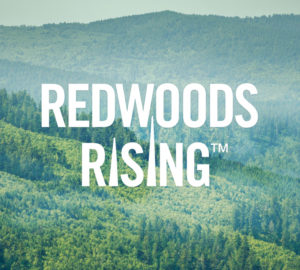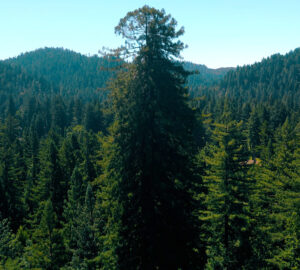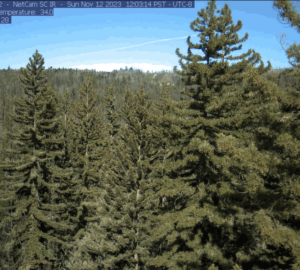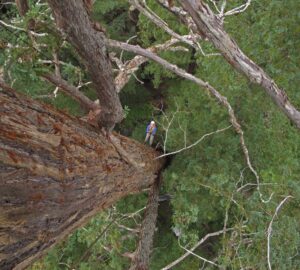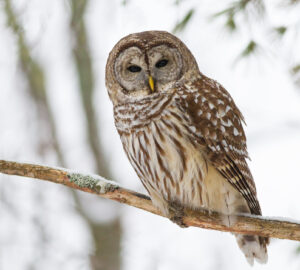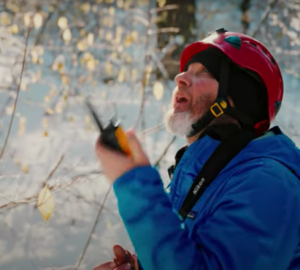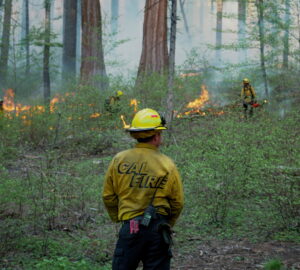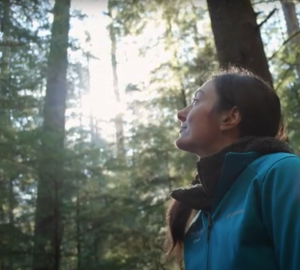Study suggests soil microbial shifts might affect redwoods and Douglas-firs differently
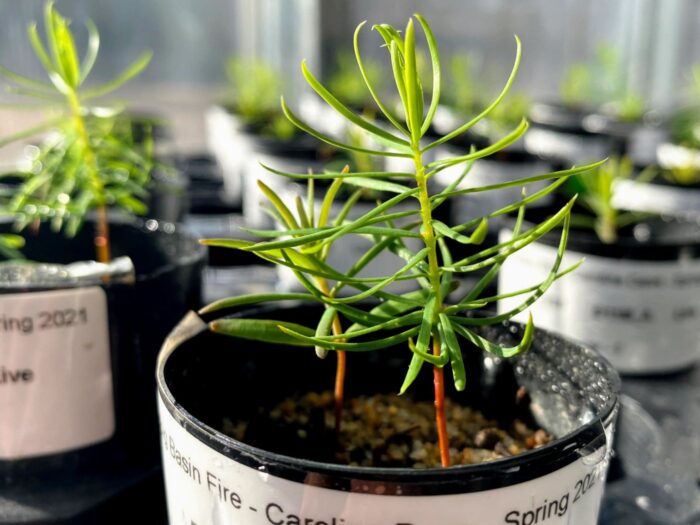
When a wildfire burns through a forest, it can leave behind a charred and seemingly lifeless landscape. But before long, seedlings sprout in the burned, black soil—the promise of a renewed forest. What kind of forest will it be? Which seedlings will thrive? In part, this fate is determined by the tiniest organisms in the soil—in particular, mycorrhizal fungi, which form symbiotic relationships with tree roots.
In August 2020, fungal ecologist Dr. Caroline Daws was studying plant-fungal interactions at Stanford University when the CZU Lightning Complex fires burned through nearly all of Big Basin Redwoods State Park near her house. In a study funded by Save the Redwoods League, she decided to focus on how fire had changed the community of microbes in the soil at Big Basin and how these changes influenced the growth of Douglas-fir and redwood seedlings in the fire’s aftermath.
Late in 2020, Daws took soil core samples in the park, both in severely burned locations and places where fire had burned more moderately. She also sampled areas outside the park that had not burned.
She discovered that fire had decreased fungal diversity by an average of 40%.
“There was also a shift in those species,” says Daws. “Some fungi that weren’t common before the fire really flourished.” Fungal pathogens increased, while many species of mycorrhizal fungi declined.
Seedling competition
Daws set up a greenhouse experiment to discover how these shifts affected competition among tree seedlings. She grew single Douglas-fir and coast redwood seedlings in some pots; in others, she grew two seedlings of the same species or one of each. Daws inoculated the pots with small amounts of unburned, moderately burned, or severely burned soil that either contained live microbes or had been sterilized to remove microbes.
She found that Douglas-fir and redwood seedlings grew larger in unburned soils, whether or not they shared a pot with a neighbor. Overall, seedlings of both species did not grow as much when microbes were included in the soil, likely due to the high abundance of plant pathogens in the burned soils. However, after a high-severity fire, the research suggests the microbes found in burned soils may give redwood seeds a competitive advantage against Douglas-fir seedlings.
Daws stresses that in real forests, there are other factors at play: soil minerals; moisture; and how quickly mycorrhizae that might survive fire on the roots of mature live trees can colonize the young seedlings.
“My main takeaway is that there are really complex interactions between microbial presence, neighbor presence, and fire severity,” says Daws.
In the future, Daws would like to resample the soils to learn how the microbial communities change over time. She would also like to document seedlings at Big Basin to see how her greenhouse experiment-based predictions about seedling competition bear out in the real world.
Many redwood forests are growing warmer and drier, with less coastal fog. At the same time, the risk of fire is increasing. It will be important to understand how redwoods respond to these changing conditions—at the macro- and microbial level—so we can help these forests recover and thrive.

